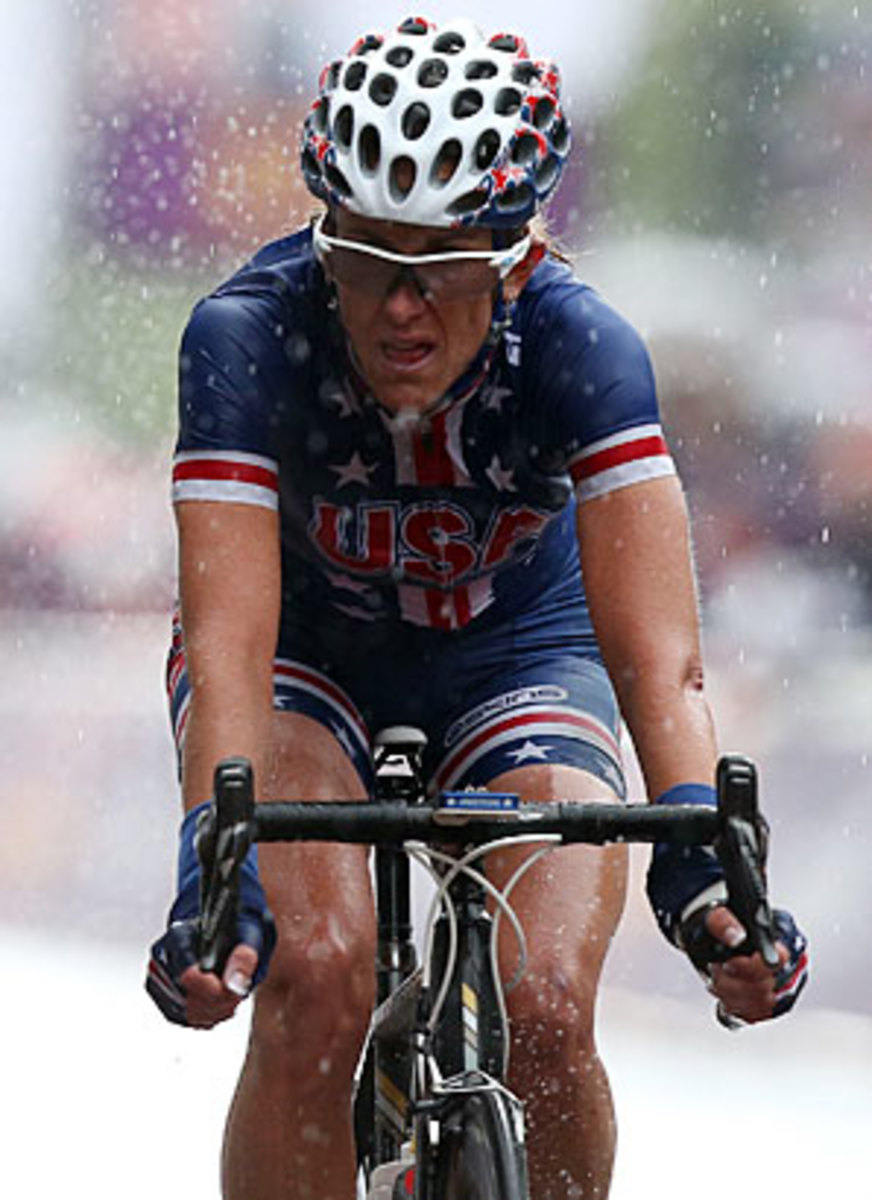
Elements, other riders complicating Armstrong's time trial defense
LONDON -- Kristin Armstrong does not suffer from triskaidekaphobia, but no one could blame her if she comes down with a virulent case of white-line fever.
Really, some things never have gone well together: stripes and plaids; Prince Charles and Princess Diana; and -- if you happen to be the defending Olympic time trial road cyclist -- torrential rain and painted white lines during the road race that is contested 72 hours before your specialty.
Armstrong had to endure a little of everything in the road race Sunday, including a tease of sun and hours of start-building-the-ark rain that made the roads as slick as a Coen Brothers grifter, a tumble when another rider inadvertently knocked her down with about an hour left before the finish line at The Mall, and even No. 13, which, in cycling and more sedentary pursuits, is not a good omen.
Cycling tradition demands the unfortunate rider invert the number affixed to the back of jersey so it vaguely resembles an uncompleted 81, which Armstrong did on the right side, but she left the number on the left side upright. "I say I'm not superstitious, and I try not to be superstitious, but when you're handed No. 13 ..." Armstrong said. "So I won't lie. I was like wow, what now?'"
Being a glass-half-full kind of woman -- Armstrong never thought the broken clavicle she sustained in late May in her hometown of Boise in the prologue of a cycling tour would keep her out of London -- she did not fret about the jersey number as much as the potential hazards of the greasy road race leading into the time trial on Wednesday.
At the world championships, the order is reversed: time trial first, then the road race. Maybe the logistics of closing roads in traffic-choked London on a weekday dictated the flip-flop, but in any case the schedule was hardly beneficial to the grand dame of USA cycling, who turns 39 on the final weekend of the Games.
(Like some red wines, cycling is best served mature. Among Armstrong's leading time-trial rivals are Canada's venerable Clara Hughes, who turns 40 in September, and Germany's Judith Arndt, who is 36.)
When asked if there were any benefits to getting the road race out of the way, Armstrong replied, "I'm open," speaking of her legs in the way that a racecar driver might speak of his engine. "My legs are open. Sometimes when you travel here, especially from America, you [try to] get over jet lag and take a really easy week. When you do your first really hard effort, like [the road race], it takes you an hour to get into it. But today was four hours long so I was able to ride into the race and feel really good. It would have taken me an individual hard workout to [get ready] for the time trial. So that was a good thing.
"What isn't great is the safety out there for the time trial, having the road race two days before. There's a little egg on my elbow (from the knockdown). It shouldn't be a problem. Nothing's broken. But safety's always on your mind. You can't help it. When you're time trialing and it's one of your main focuses, when you have a torrential downpour and you've got white paint everywhere, it makes you think about your safety. It's not only you but the riders around you. I didn't take myself out [in the road race]. I was taken out."
Now the stakes are raised for Armstrong, not unlike the white paint on greasy roads that can be hazardous to a gold-medal cyclist's health.
"Whenever you're reigning champion, there's a little pressure," Armstrong said. "[There's] a target on your back. But I feel like I've consistently had strong time trials this season, and I hope that I can end up on top on Wednesday."
At the Olympics, it's preferable to be the reigning time-trial champion than the rained-on time-trial champion.





